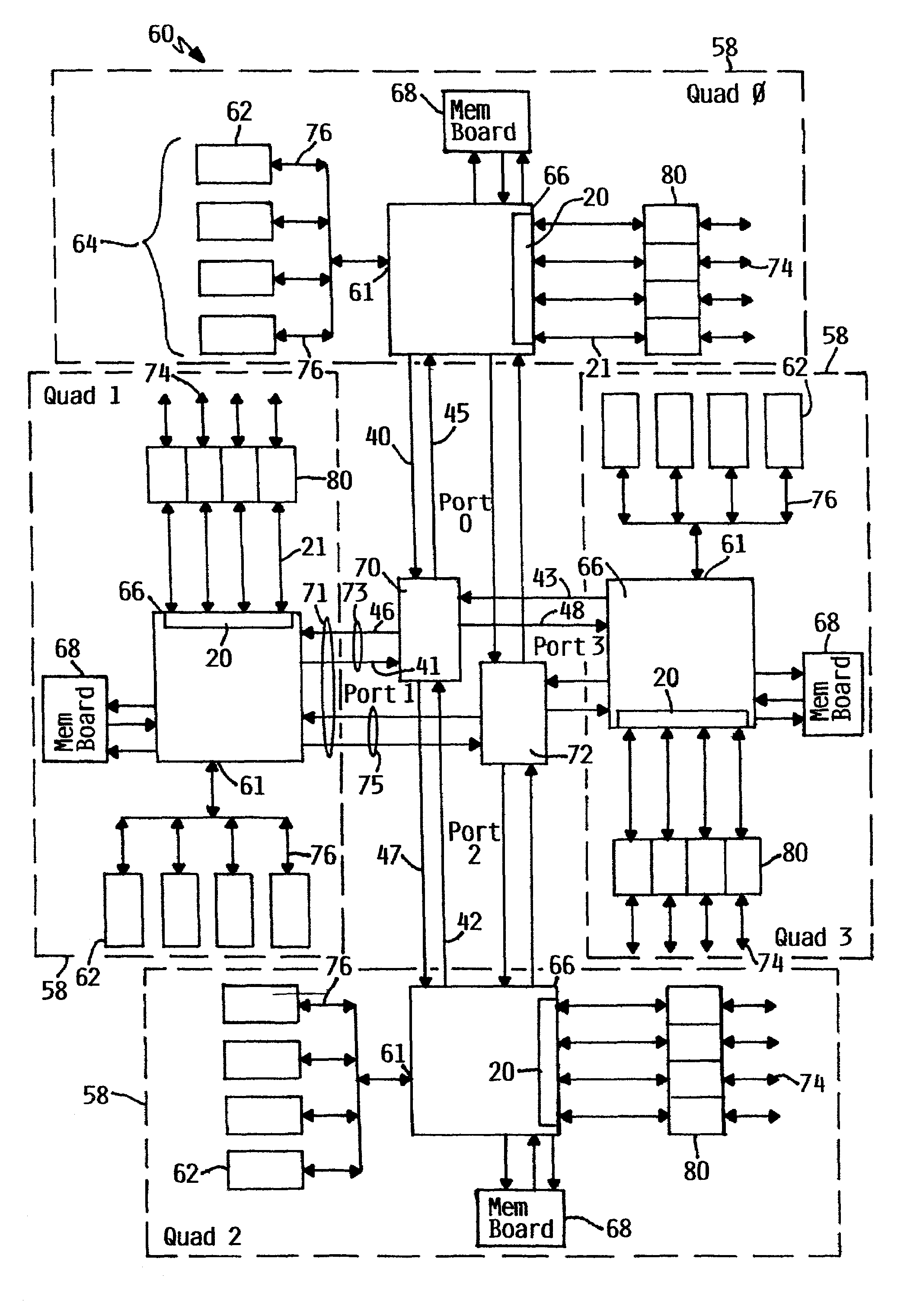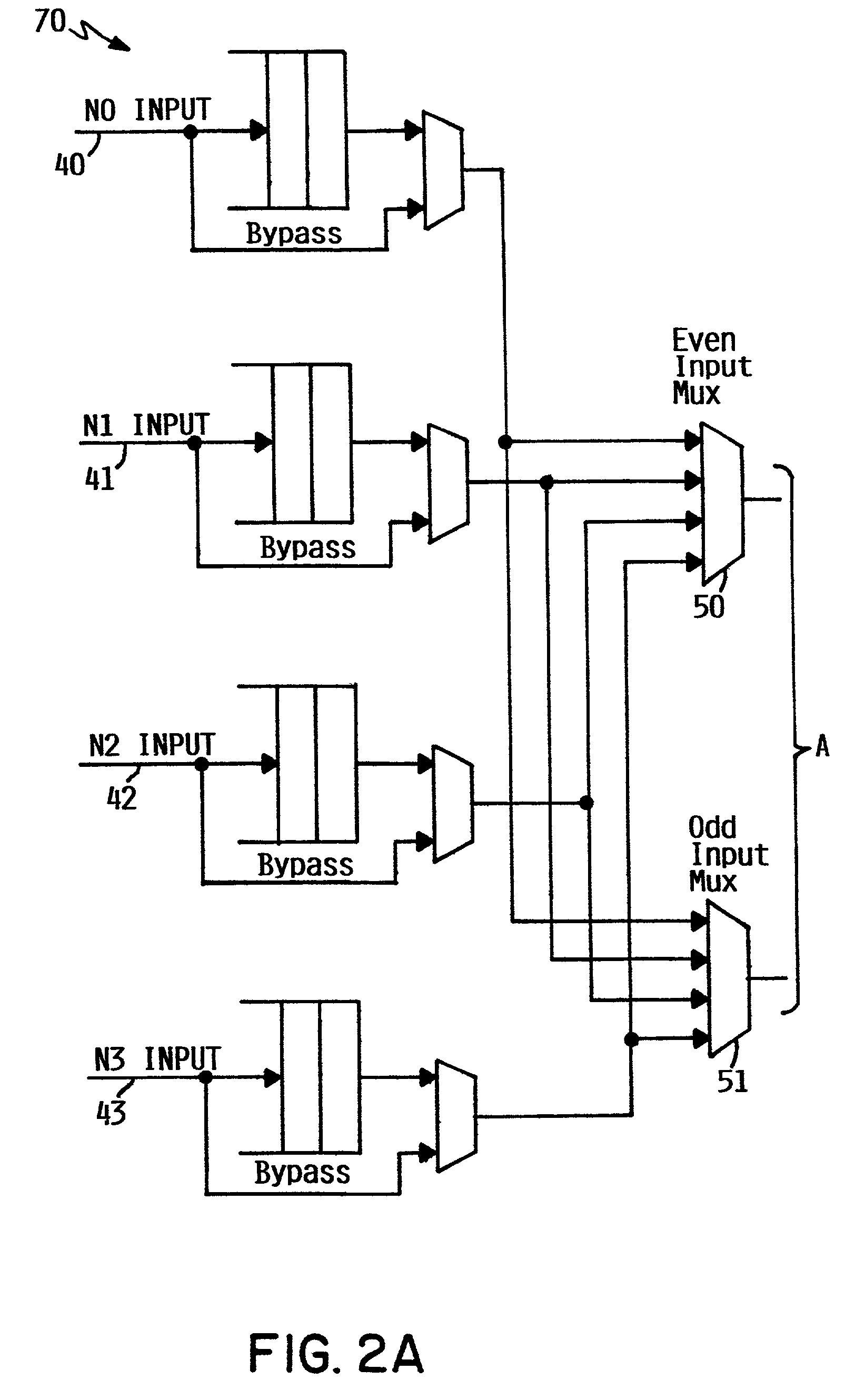Distributed allocation of system hardware resources for multiprocessor systems
a multi-processor system and hardware resource technology, applied in the field of multi-processor, multi-node computer system use, can solve the problems of system deadlock, communication necessary to maintain allocation, and system hardware resources can become inconvenient to use,
- Summary
- Abstract
- Description
- Claims
- Application Information
AI Technical Summary
Benefits of technology
Problems solved by technology
Method used
Image
Examples
Embodiment Construction
Overview
[0031]In multiprocessor computer systems comprised of more than one processing node, hardware resources such as temporary data buffers must be allocated dynamically. In the preferred embodiment, resources required to complete a transaction within a memory controller are identified as a transaction identifier (TrID). In the preferred embodiment, the allocating component is a communications pathway consisting of a tag and address crossbar system which allocates TrID resources that exist on the target components known as memory control agents. Each node of the multiprocessor system disclosed has a memory control agent which coordinates one or more processors in the node along with local system resources and communications with the crossbar system. The tag and address crossbar alone issues requests that cause the transaction identifiers (TrIDs) corresponding to resources inside the memory control agent to be allocated. When the memory control agent has completed work on the tran...
PUM
 Login to View More
Login to View More Abstract
Description
Claims
Application Information
 Login to View More
Login to View More - R&D
- Intellectual Property
- Life Sciences
- Materials
- Tech Scout
- Unparalleled Data Quality
- Higher Quality Content
- 60% Fewer Hallucinations
Browse by: Latest US Patents, China's latest patents, Technical Efficacy Thesaurus, Application Domain, Technology Topic, Popular Technical Reports.
© 2025 PatSnap. All rights reserved.Legal|Privacy policy|Modern Slavery Act Transparency Statement|Sitemap|About US| Contact US: help@patsnap.com



